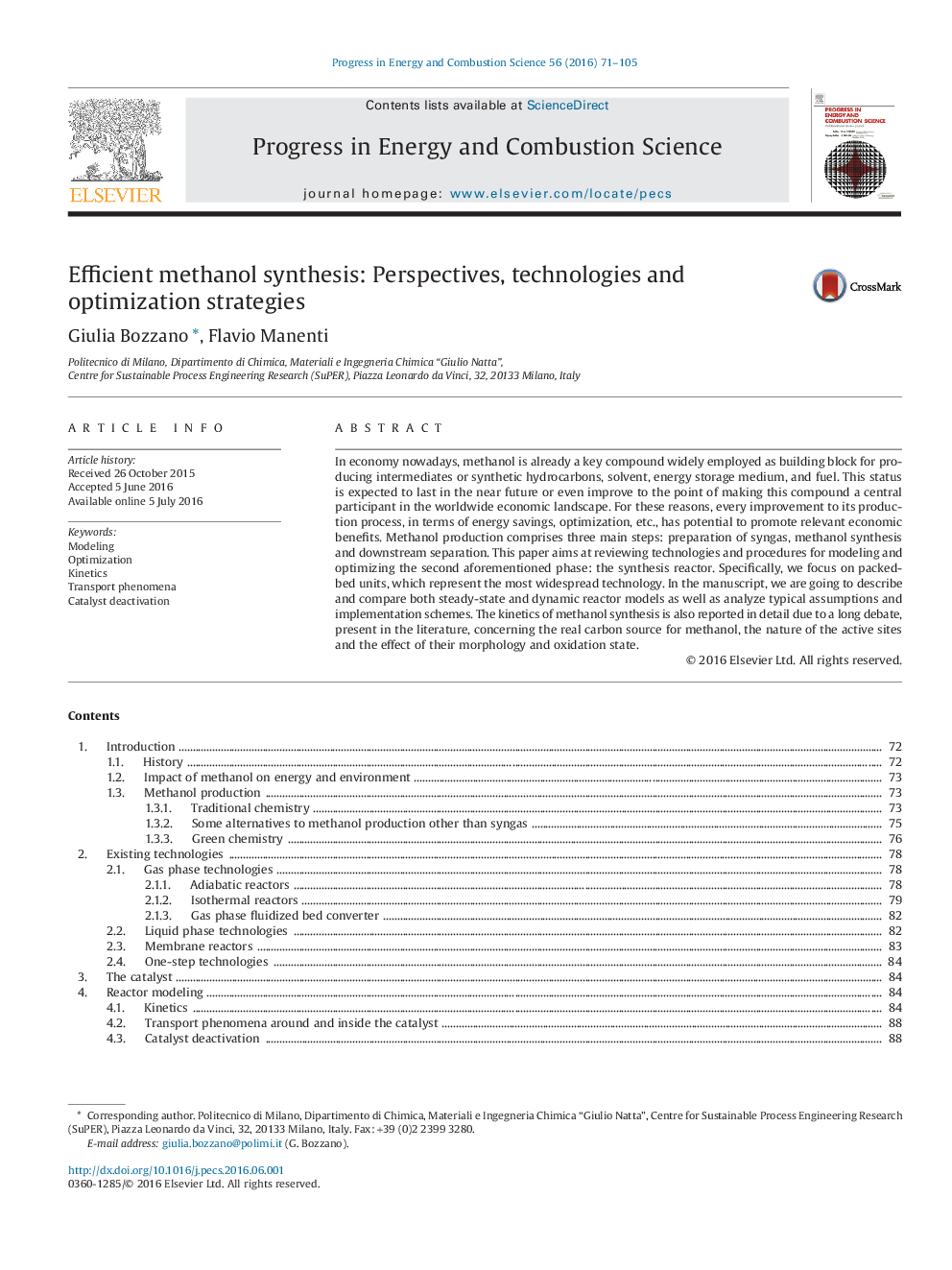| Article ID | Journal | Published Year | Pages | File Type |
|---|---|---|---|---|
| 241612 | Progress in Energy and Combustion Science | 2016 | 35 Pages |
In economy nowadays, methanol is already a key compound widely employed as building block for producing intermediates or synthetic hydrocarbons, solvent, energy storage medium, and fuel. This status is expected to last in the near future or even improve to the point of making this compound a central participant in the worldwide economic landscape. For these reasons, every improvement to its production process, in terms of energy savings, optimization, etc., has potential to promote relevant economic benefits. Methanol production comprises three main steps: preparation of syngas, methanol synthesis and downstream separation. This paper aims at reviewing technologies and procedures for modeling and optimizing the second aforementioned phase: the synthesis reactor. Specifically, we focus on packed-bed units, which represent the most widespread technology. In the manuscript, we are going to describe and compare both steady-state and dynamic reactor models as well as analyze typical assumptions and implementation schemes. The kinetics of methanol synthesis is also reported in detail due to a long debate, present in the literature, concerning the real carbon source for methanol, the nature of the active sites and the effect of their morphology and oxidation state.
